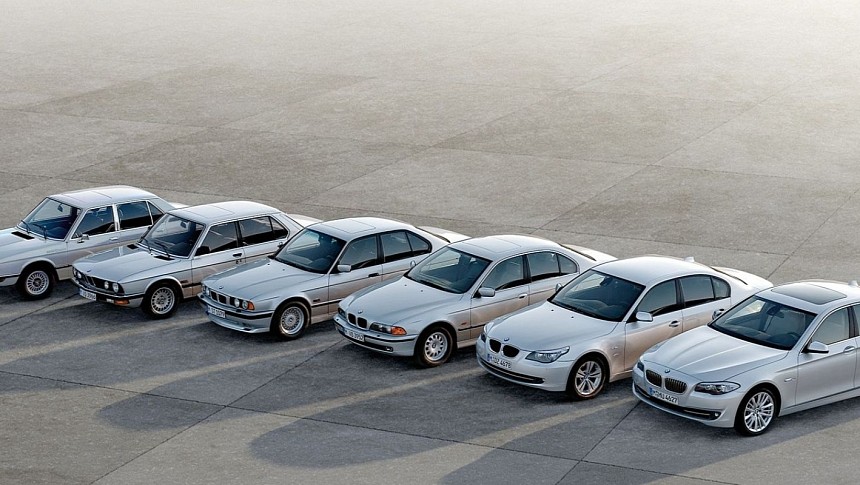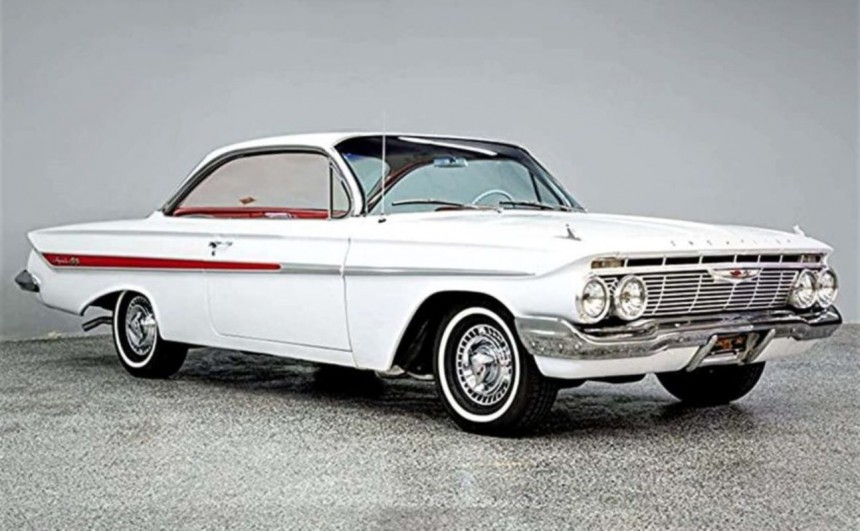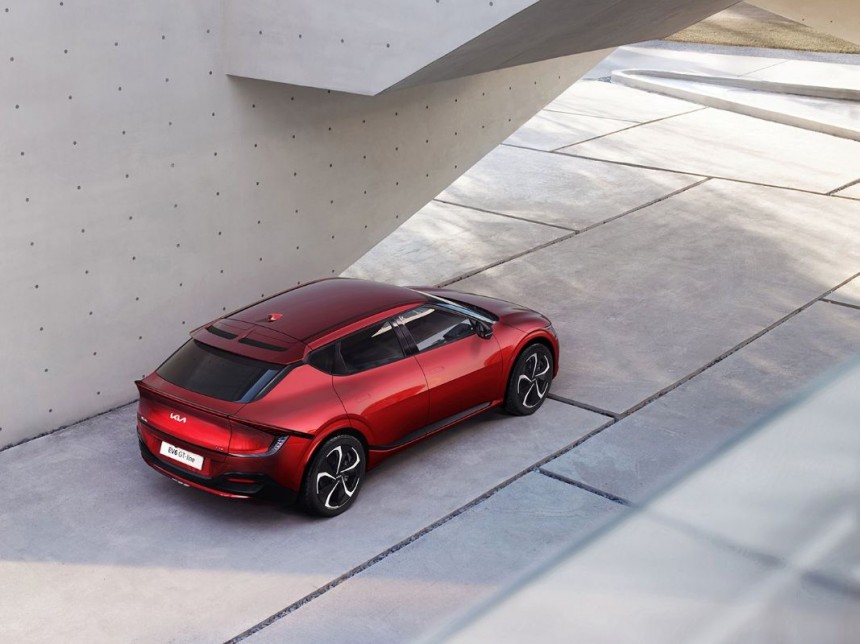In the blink of an eye, the 90s ushered in a metamorphosis that gripped the automotive realm worldwide. An extraordinary transformation took hold, sculpting the once angular cars of the 80s into sleek and aerodynamic marvels. Across continents, the automotive landscape experienced a seismic shift as the 90s dawned, setting the stage for a new era of curvaceous and effortlessly swift machines.
Despite its undervalued status and widespread disregard, this transformative shift has emerged as the automotive industry's most remarkable metamorphosis in recent decades. A convergence of enhanced fuel efficiency, advanced technology, and elevated safety benchmarks serves as the driving force behind the captivating presence of the modern curved vehicles that grace our bustling streets. Within the unassuming fabric of this transition lies an extraordinary tale of progress, waiting to be fully appreciated and acknowledged.
Peering through the rearview mirror of a contemporary American automobile, the lineage of its predecessors gradually morphs into a series of progressively blockier forms, retracing their line all the way back to the remarkable 1930s. Once considered mere vessels to navigate the expanse between point A and point B, with perhaps a touch of added comfort for a premium price, cars have experienced an extraordinary evolution.
In the days of yore, our grandparents embarked on a quest to fashion automobiles that embodied practicality and utility. The art of design, intertwined with functionality, dictated a paradigm where boxiness reigned supreme, ingeniously maximizing the expanse within. Particularly evident in the opulent sedans predating the 1990s, the need to prove their speed took a backseat as automakers wholeheartedly dedicated themselves to transforming their four-wheeled marvels into rolling sanctuaries reminiscent of refrigerators, exuding a sense of spaciousness akin to rooms on wheels.
The kingdom of technology posed a formidable challenge in a realm where vast expanses knew no bounds. The absence of computerized modeling thrust car manufacturers into a realm where wood and clay became their faithful companions as they painstakingly molded the very essence of automobiles. Like skilled carpenters navigating unyielding terrain, they grappled with the complexities of shaping curves using solid materials, their craft demanding immense patience and ingenuity.
In the days of yore, as the clock ticked amidst a technological deficit, the pursuit of smaller yet mightier engines remained an elusive dream. The confines of antiquity simply lacked the means to birth such powerhouses. Hence, the engine bays of vintage muscle cars housed an average of eight and 16-cylinder behemoths that demanded a larger chassis for their dwelling. A grand tapestry of engineering woes unfolded, where the production of larger vehicles became a costly endeavor. Within the realm of rough-edged rectangles, automakers found solace in a prudent choice that allowed them to conserve precious materials in the face of financial constraints.
In the cyclical dance of generations, each era encounters its own distinct fuel crisis, and those who witnessed the tumultuous 80s and 90s can attest to its profound impact. A compelling impetus behind the shift towards voluptuous car designs stemmed from the pressing need to enhance fuel economy—a truth rooted in the laws of physics. Though sparing the intricacies of scientific depths, it suffices to say that curves served as allies in the battle against resistance, allowing the seamless flow of air over vehicles and thereby reducing drag. The alluring consequence of these sleek contours? Improved miles per gallon, a respite in the relentless pursuit of fuel efficiency.
However, it wasn't solely the automotive industry's endeavor to spare their clientele from fuel-related burdens. In the twilight of the 1970s, governmental authorities tightened their grip on fuel economy, heralding the impending arrival of stringent standards for car manufacturers. The task at hand was straightforward: crafting vehicles capable of traversing longer distances on diminishing fuel reserves. Yet, achieving this newfound efficiency under the hood proved to be an expensive venture. In this puzzle, curves emerged as a savior, offering a shortcut to augment fuel economy without delving into costly engine modifications. Embracing the realm of aerodynamics, automakers reaped the benefits of reduced costs while accelerating progress throughout the supply chain.
To comply with regulations and curtail fuel expenses, every vehicle gracing the market became beholden to the allure of exuberant curves. Engineers and designers forged an unprecedented alliance, their collaborative efforts leaving no stone unturned in their quest for impeccable aerodynamics. Thus, gearheads owe a debt of gratitude to this harmonious partnership, as it birthed the beloved and undulating automotive icons of the 90s, such as the iconic fourth-generation Mustangs, forever cherished by enthusiasts.
Just as fashion undergoes a metamorphosis over time, so too does the realm of car design. Where once the elegance of a top hat and suit captivated the early 20th century, a century later, the masses gravitated towards the comfort and casualness of jeans or shorts. In parallel, the allure of boxy cars began to wane as automotive aficionados steered their aspirations towards the seductive embrace of curves, a shift that car manufacturers keenly embraced.
Across the annals of history, European automobiles stood as timeless embodiments of sensuous contours, driven by a desire to conserve fuel amidst sharper price hikes compared to their American counterparts. These iconic curvaceous wonders, epitomized by the likes of the Porsche 911, wove a narrative that transcended geographical boundaries, imprinting their influence upon the American landscape.
As German standards for automotive luxury rose in popularity across the United States, American automakers eagerly embraced these distinguished cues, incorporating similar touches within their own vehicles. Thus, a captivating fusion of European elegance and American ingenuity emerged, heralding a new era where curvaceous designs became the embodiment of automotive sophistication.
The concept of curvaceous cars is far from a novel invention, with the rich tapestry of American automobile history boasting an array of luxurious and muscular vehicles adorned with sleek corners. This legacy stretches as far back as the groundbreaking Cord 810 in 1936. Throughout the annals of the American automotive industry, one can unearth a treasure trove of curvilinear marvels, each a testament to the ever-evolving nature of automotive design spread across the tapestry of time.
In the realm of automotive nostalgia, curvaceous cars have always held a revered place. An embodiment of this allure lies in the iconic 1950s Corvette, a timeless beauty that gracefully graced the streets of yesteryear, bearing visible inspiration from across the Atlantic, a tribute to the European aesthetic that captivated the hearts of enthusiasts.
While the fashion of boxy cars may have dwindled, remnants of their legacy endure. Emblematic badges, such as the enduring Dodge Challenger, remain steadfast in their origins, proudly flaunting sharp corners in the vast expanse of the 21st century. However, the reign of curvaceous cars is firmly entrenched, poised to dominate the automotive landscape for the foreseeable future.
One can't help but ponder the musings of time, where we may gaze back upon the vehicles of today and marvel at how we once perceived their sleekness and modernity as our understanding and aesthetic sensibilities continue to evolve with the passage of years.
Despite its undervalued status and widespread disregard, this transformative shift has emerged as the automotive industry's most remarkable metamorphosis in recent decades. A convergence of enhanced fuel efficiency, advanced technology, and elevated safety benchmarks serves as the driving force behind the captivating presence of the modern curved vehicles that grace our bustling streets. Within the unassuming fabric of this transition lies an extraordinary tale of progress, waiting to be fully appreciated and acknowledged.
Peering through the rearview mirror of a contemporary American automobile, the lineage of its predecessors gradually morphs into a series of progressively blockier forms, retracing their line all the way back to the remarkable 1930s. Once considered mere vessels to navigate the expanse between point A and point B, with perhaps a touch of added comfort for a premium price, cars have experienced an extraordinary evolution.
In the days of yore, our grandparents embarked on a quest to fashion automobiles that embodied practicality and utility. The art of design, intertwined with functionality, dictated a paradigm where boxiness reigned supreme, ingeniously maximizing the expanse within. Particularly evident in the opulent sedans predating the 1990s, the need to prove their speed took a backseat as automakers wholeheartedly dedicated themselves to transforming their four-wheeled marvels into rolling sanctuaries reminiscent of refrigerators, exuding a sense of spaciousness akin to rooms on wheels.
The kingdom of technology posed a formidable challenge in a realm where vast expanses knew no bounds. The absence of computerized modeling thrust car manufacturers into a realm where wood and clay became their faithful companions as they painstakingly molded the very essence of automobiles. Like skilled carpenters navigating unyielding terrain, they grappled with the complexities of shaping curves using solid materials, their craft demanding immense patience and ingenuity.
In the cyclical dance of generations, each era encounters its own distinct fuel crisis, and those who witnessed the tumultuous 80s and 90s can attest to its profound impact. A compelling impetus behind the shift towards voluptuous car designs stemmed from the pressing need to enhance fuel economy—a truth rooted in the laws of physics. Though sparing the intricacies of scientific depths, it suffices to say that curves served as allies in the battle against resistance, allowing the seamless flow of air over vehicles and thereby reducing drag. The alluring consequence of these sleek contours? Improved miles per gallon, a respite in the relentless pursuit of fuel efficiency.
However, it wasn't solely the automotive industry's endeavor to spare their clientele from fuel-related burdens. In the twilight of the 1970s, governmental authorities tightened their grip on fuel economy, heralding the impending arrival of stringent standards for car manufacturers. The task at hand was straightforward: crafting vehicles capable of traversing longer distances on diminishing fuel reserves. Yet, achieving this newfound efficiency under the hood proved to be an expensive venture. In this puzzle, curves emerged as a savior, offering a shortcut to augment fuel economy without delving into costly engine modifications. Embracing the realm of aerodynamics, automakers reaped the benefits of reduced costs while accelerating progress throughout the supply chain.
To comply with regulations and curtail fuel expenses, every vehicle gracing the market became beholden to the allure of exuberant curves. Engineers and designers forged an unprecedented alliance, their collaborative efforts leaving no stone unturned in their quest for impeccable aerodynamics. Thus, gearheads owe a debt of gratitude to this harmonious partnership, as it birthed the beloved and undulating automotive icons of the 90s, such as the iconic fourth-generation Mustangs, forever cherished by enthusiasts.
Across the annals of history, European automobiles stood as timeless embodiments of sensuous contours, driven by a desire to conserve fuel amidst sharper price hikes compared to their American counterparts. These iconic curvaceous wonders, epitomized by the likes of the Porsche 911, wove a narrative that transcended geographical boundaries, imprinting their influence upon the American landscape.
As German standards for automotive luxury rose in popularity across the United States, American automakers eagerly embraced these distinguished cues, incorporating similar touches within their own vehicles. Thus, a captivating fusion of European elegance and American ingenuity emerged, heralding a new era where curvaceous designs became the embodiment of automotive sophistication.
The concept of curvaceous cars is far from a novel invention, with the rich tapestry of American automobile history boasting an array of luxurious and muscular vehicles adorned with sleek corners. This legacy stretches as far back as the groundbreaking Cord 810 in 1936. Throughout the annals of the American automotive industry, one can unearth a treasure trove of curvilinear marvels, each a testament to the ever-evolving nature of automotive design spread across the tapestry of time.
While the fashion of boxy cars may have dwindled, remnants of their legacy endure. Emblematic badges, such as the enduring Dodge Challenger, remain steadfast in their origins, proudly flaunting sharp corners in the vast expanse of the 21st century. However, the reign of curvaceous cars is firmly entrenched, poised to dominate the automotive landscape for the foreseeable future.
One can't help but ponder the musings of time, where we may gaze back upon the vehicles of today and marvel at how we once perceived their sleekness and modernity as our understanding and aesthetic sensibilities continue to evolve with the passage of years.













